Experiments and workshop results and reflection:
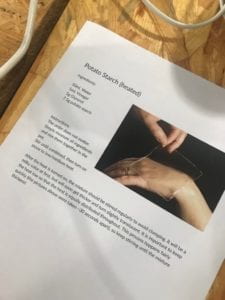
For the in-class workshop I was in a group with 2 other students and we had the task of using potato starch to create a substance similar to plastic. What I enjoyed about this recipe is that it is a sustainable and easy to make recipe that eliminates the need of producing additional plastic and can be done in one’s home with few ingredients.
Ingredients:
50 ml water
5ml glycerol
7.5 grams potato starch
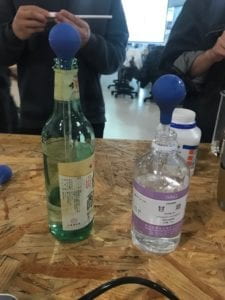
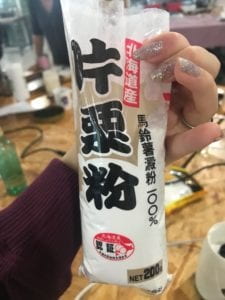
We mixed the ingredients in a glass beaker first and then switched to a metal tray. We measured the ingredients in a grams measuring spoon and scale. The mixing was done in the small automatized mixer. After a few minutes on the heating pad, the ingredients quickly took the form of a goo-like substance and quickly began to burn. Parts of the mixture adopted a brownish color and became rather hard. We learned that the heat of the pad had to be lower and we had to continue mixing the substance. The end product was meant to resemble a moldable sheet of clear plastic-like substance, however our attempt resulted in a soft gooey paste that was too sticky to resemble a sheet.
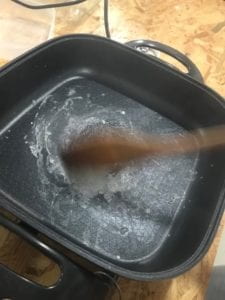
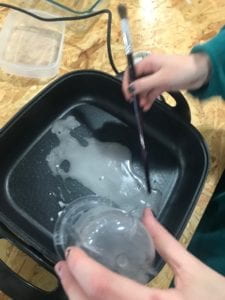
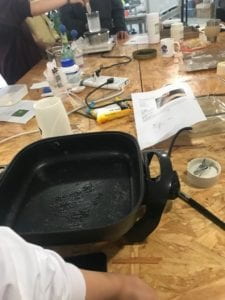
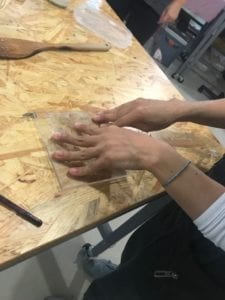
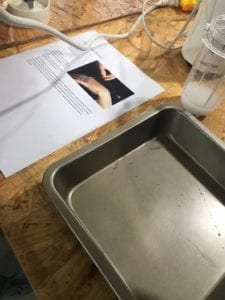
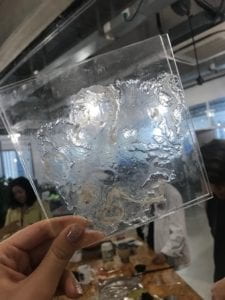
We allowed the substance to cool for a bit and placed it between 2 pieces of glass, however the substance did not lose its goo-like consistency and we decided that a second attempt will definitely be needed to achieve the optimum elasticity, yet firmness of the potato starch plastic sheet.
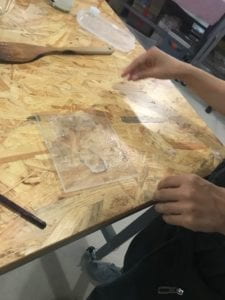
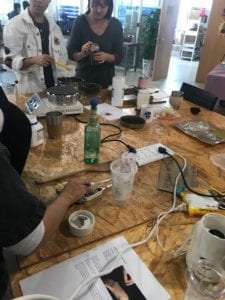
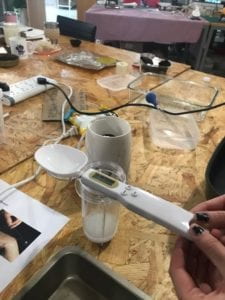
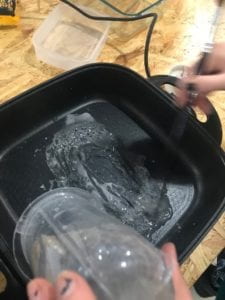
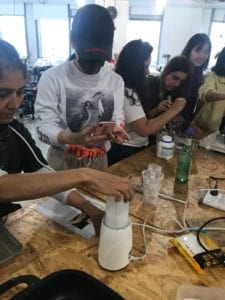
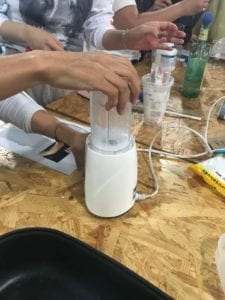
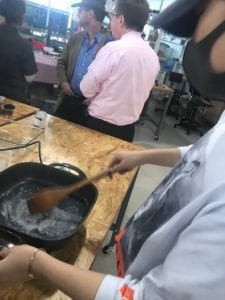
Reflection:
The conclusion from this project is that it is important to make several attempts before the desired consistency is achieved. I would not attempt to recreate this process again, however I do want to try creating the coffee ground molds, which another team was tasked with.
Readings Notes:
The Plastic and the work of the biodegradable (Pages 208 – 225) reading:
- the plastic found in the ocean gyres and suspended throughout the seas is not exclusively composed of identifiable objects in the form of water bottles, toy ducks or sandwich bags, but also consists of microplastics.
- These small-scale pellets, or nurdles, and other plastic fragments are residues from the breakdown of plastic products or fallout from manufacturing sites where tiny plastic feedstock drifts in considerable quantities from factory lots to the seas.
- recent European Union (EU) Maritime Affairs and Fisheries initiative to pay fishermen in the Mediterranean to catch plastic rather than fish
- Fishing for plastics also seems to address the pollution of the seas, which not only affects water quality but also impairs the lives of many marine organisms
- Accumulation in this sense points less towards an exclusive emphasis on environmental contamination and more towards processes of environmental modification in which we are situated with multiple more-than-human entities.
- Accumulation here refers not just to the literal accretion of residual matter in the seas, but also to the build-up of plastics within environmental processes and corporealities
- From marine organisms that ingest plastics with concentrated levels of persistent organic pollutants (POPs), to bacteria and algae that colonize plastic, and marine organisms that incorporate plastic debris as habitat or flotation medium, plastics are having considerable effects on organisms and environments.
- Eight per cent of world oil production contributes to the substance and energy required to manufacture plastics
- Upon disposal, plastics travel to those carbon sinks of oceans and landfills. In these zones, they further degrade and, depending upon chemical composition, may release carbon dioxide or lodge in the bodies of ocean organisms, thereby diversely influencing the material composition of the ocean as a carbon sink
- Biodegradability has at times been a sought-after quality for plastics, as it signals the seamless elimination of this highly disposable material.
- Most plastics do not actually biodegrade, but instead degrade into smaller particles through chemical processes and physical weathering.
- Biodegradation may be the sought-after quality for plastics, but degradation is the concrete way in which plastics dematerialize and rematerialize to generate new environmental conditions
- The bio-of degradation then has as much to do with the forms of life – the organisms, processes and environments – that are drawn into the ongoing breakdown of plastics, whether by inadvertently ingesting microplastics or undergoing increased exposure to pollutants that are concentrated on plastic debris surfaces.
- Plastics also collect and sediment over time in cumulative quantities. All plastics ever manufactured since the rise of the Plastic Age are still likely to be present in the environment and oceans in some form, as they will not have completely broken down yet.
- Bodies and natures form in and through shared contexts. In the space of plastic accumulation, both humans and more-than-humans take part in material and relational exchanges filtered through plastics and their residues.
- At the same time, plastics have been shown to be an adsorption medium for potentially harmful chemicals, carrying and dispersing additives and plasticizers such as flame retardants, Bisphenol-A (BPA) and phthalates, as well as drawing in and concentrating chemicals from seawater.
- When ingested, these plastics then potentially pass on chemical loads to other types of marine life, which regularly make a meal of plastic particles, thereby amplifying chemical effects in the food chain.
- Trees – and the many other more-than-humans that inhabit forests – are also implicitly included as carbon workers in this context, since their participation is gauged in relation to the project of reducing carbon.
- More than-humans might then be more explicitly included as workers in the carbon project – entities the participation of which becomes identified as relevant in relation to reducing (or contributing to) carbon emissions.
- concerns and actions. In his metabolic theory of labour and value, Marx excluded the non-human from his definition of human labour. For Marx, labour was an expression of ‘man’s’ metabolic relation with and conversion of ‘nature’.
- might not consist of ‘man’ labouring to transform ‘nature’ through metabolic relation, but rather occur through intra-actions and processes of materialization that direct new possibilities for material politics.
- The degradation of plastics in oceans and terrestrial environments is part of the contradictory way in which plastics accumulate: not primarily as identifiable objects but mostly in the form of microplastics, chemical migration and bodily accumulation.
Steps I will take to test my hypothesis:
- I will interview NYUSH students and faculty, as well as cleaning staff about whether they know of a similar solution that already exists (such as bags made from potato peel waste)
- I will research the financial incentive that companies would have with implementing such a packaging system in China
- I will test the viability of materials that resemble the properties of plastic and whether they will withstand the weight of heavy items
- I will attempt to use the heating press, oven, as well as shredder to test the strength of products made from discarded plastic, as well as the possibility of creating plastic alternatives.
Items and machines I will need for my experiment:
- the heating press
- the weighing scales
- the plastics oven
- the shredder
- the small irons
Leave a Reply